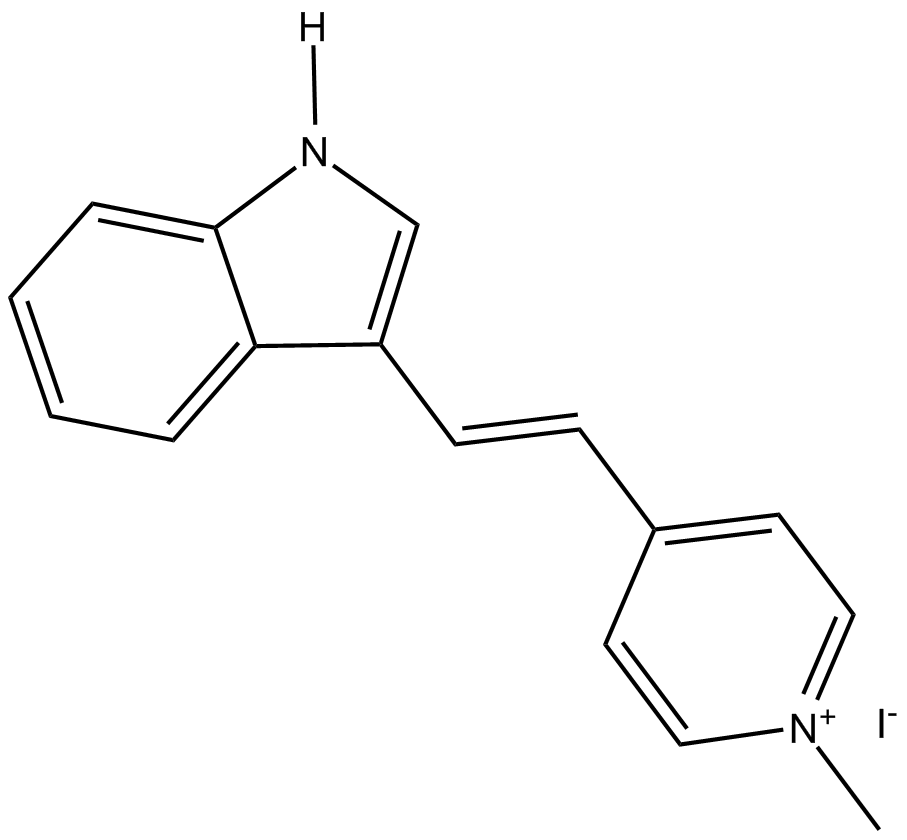F16 |
| Catalog No.GC14791 |
potential antitumor agent
Products are for research use only. Not for human use. We do not sell to patients.

Cas No.: 36098-33-6
Sample solution is provided at 25 µL, 10mM.
F16 is a small, cationic, lipophilic, and fluorescent molecule capable of binding preferentially to mitochondrial membranes and disrupts their function. F16 is a potential antitumor agent.
F16 affected growth in some mouse and human breast cancer cell lines. F16 resulted in a dramatic decrease in the number of cells in S phase and an increase in the percentage of cells in G1 phase [1]. Prolonged incubation with 3 μM F16 led to increased cell death of F16-sensitive cells but not of F16-resistant ones. F16 accumulation in mitochondria induced mitochondrial damage characterized by imbalance of volumetric homeostasis, failure to synthesize ATP, cytochrome c release and increased production of reactive oxy gen species [1]. F16 incubation decreased the cellular ATP pool in both parental EpH4-A6 and Bcl-2-overexpressing EpH4-A6.C13 and EpH4-A6.C18 cells in a time-dependent manner [1]. Treatment with F16 promoted early release of cytochrome c in transformed EpH4-A6 cells. Treatment with F16 (0.3-3 μM) resulted in the characteristic apoptotic DNA laddering in the EpH4-A6 cells. F16-Induced mitochondrial dysfunction triggers apoptosis or necrosis. F16 induced necrosis in various cell lines resistant to apoptosis [2].
References:
[1] Fantin V R, Berardi M J, Scorrano L, et al. A novel mitochondriotoxic small molecule that selectively inhibits tumor cell growth[J]. Cancer cell, 2002, 2(1): 29-42.
[2] Fantin V R, Leder P. F16, a mitochondriotoxic compound, triggers apoptosis or necrosis depending on the genetic background of the target carcinoma cell[J]. Cancer research, 2004, 64(1): 329-336.
Average Rating: 5 (Based on Reviews and 6 reference(s) in Google Scholar.)
GLPBIO products are for RESEARCH USE ONLY. Please make sure your review or question is research based.
Required fields are marked with *




















